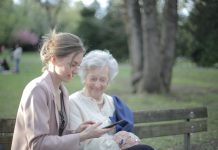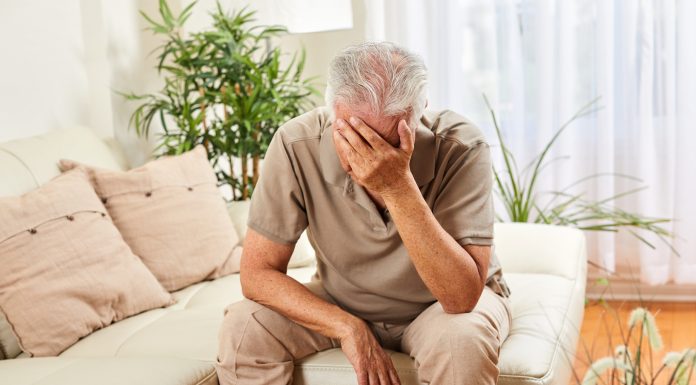Studies show that as of 2023, approximately 55 million people globally lived with dementia. And in countries like the US, almost 80% of older adults affected are usually catered to by friends and relatives at home. (1)(2)
That said, making a home dementia-friendly can significantly help if you’re living with a patient.
What’s a Dementia-Friendly Home?
A dementia-friendly home is a safe and familiar space that helps your loved one feel comfortable enough to go through their daily lives despite having the condition. This is something you can achieve through simple adjustments like clear labels and bright lighting.
However, if the cases are too advanced, getting help from in-home dementia care experts you prefer can make a huge difference. These care experts can help you create a more comprehensive care plan and support you and your loved one all the way.
Whether you opt for the experts or not, here’s a good place to start making your home dementia-friendly:
Label Things at Home
If possible, label everything; label cabinets, drawers, cupboards, shelves, and even appliance buttons. This can help your loved one locate what they need independently, reducing frustration.
Here are some tips for creating effective labels:
Use Large, Bold Fonts
Use large, easy-to-read fonts for maximum visibility. Bold fonts can further enhance readability.
Opt for Simple Language
Use simple, clear words that are easy to understand. Avoid using complex sentences or jargon. For example, label a cabinet as “Pots and Pans” instead of “Cooking Utensils.”
Color-Code
Light switches can be a challenge to see, especially at night. Paint them a bright color that contrasts with the wall. Do the same for doorknobs, especially on the bathroom door.
Add Pictures
Consider adding pictures or symbols alongside the text to further enhance clarity. For example, a picture of a toothbrush on a label for the toothbrush drawer.
People with dementia can experience difficulty processing visual information and recalling words. So, clear and concise labeling throughout the house can act as a visual cue, promoting independence and reducing confusion.
Safety First
Studies show that falling incidents are pretty high in people with dementia, particularly in the period just before diagnosis and the year it’s first diagnosed. These numbers show a dire need for fall prevention strategies for seniors at home. (3)
Here’s how to create a safer environment:
Taming the Trip Hazards
Secure loose rugs with double-sided tape or rug grippers. Get rid of electrical cords by using cordless lamps or placing cords against the wall securely.
Stairway Safety
Ensure all stairs have sturdy handrails on both sides. Consider adding non-slip treads to improve traction.
Bathroom Safety
Install grab bars near the shower or bathtub and next to the toilet for better support when getting up and down.
By prioritizing these safety measures, you can reduce the risk of falls for your loved one with dementia, promoting a sense of security within their own home.
Minimize Confusion
The human brain thrives on routine and familiarity. That’s why a cluttered space can be disorienting for someone with dementia. Here’s how to create a calmer and easier to navigate environment:
Declutter Room by Room
Start with a small space like a bathroom or pantry. Sort through items and donate or toss anything unused. Moreover, keep frequently used items easily accessible on lower shelves.
Keep Favorite Things Close
Display familiar photos and keepsakes around the house. This can be a source of comfort and spark positive memories.
Minimize Floor Patterns
Busy patterned rugs or carpets can be confusing for someone with dementia. Opt for solid-colored flooring or low-patterned rugs with secure edges to avoid tripping hazards.
With these tips, you can transform your home into a more calm and understandable space, minimizing confusion for your loved one with dementia.
Use Furniture as a Landmark
Take a moment and consider your loved one needing to use the restroom at night. In a familiar environment, they can make their way there by remembering landmarks, like a large armchair by the window. This mental map helps them find their way.
Minimize Furniture Movement
Keep familiar pieces like couches and bookshelves in consistent locations, especially relative to frequently used areas like the bedroom, bathroom, and kitchen. This creates a predictable layout that helps your loved one navigate confidently. Think of these pieces as guideposts in their mental map.
Clear Pathways for Easy Movement
Ensure there’s ample space between furniture pieces to allow for easy and safe navigation. Avoid placing obstacles in high-traffic areas like hallways, as this can create confusion and increase the risk of falls.
By using furniture strategically, you can make your home into a more intuitive and supportive environment for someone with dementia.
Lighting the Way
Proper lighting is crucial for a dementia-friendly home. It can improve visibility, reduce confusion, and enhance safety for your loved one. Here’s how to achieve this:
Brighter Bulbs in Key Areas
Increase the wattage in hallways, bathrooms, and near stairways. This reduces shadows and improves visibility.
Nightlights For Nighttime Use
A dim nightlight in the bedroom and bathroom can help your loved one find their way around at night without getting disoriented by bright overhead lights.
Motion Sensor Lights for Added Safety
Consider installing motion sensor lights in frequently used areas like hallways and doorways. This provides automatic illumination without needing to reach for a switch, reducing the risk of falls.
With these lighting strategies, you can create a well-lit environment that fosters safety and independence for your loved one with dementia.
In Closing
Dementia isn’t an easy journey. But with a dementia-friendly home, you can significantly help your loved ones live as comfortably as possible with the condition. Use these tips to make a difference at home. If you need extra support down the line, in-home dementia care experts are there to guide you and your loved one.
Source
1. “Dementia”, Source: https://www.who.int/news-room/fact-sheets/detail/dementia
2. “Caregiving for a Person with Alzheimer’s Disease or a Related Dementia”, Source: https://www.cdc.gov/aging/caregiving/alzheimer.htm
3. “Injurious falls before, during and after dementia diagnosis: a population-based study”, Source: https://www.ncbi.nlm.nih.gov/pmc/articles/PMC9799250/
























